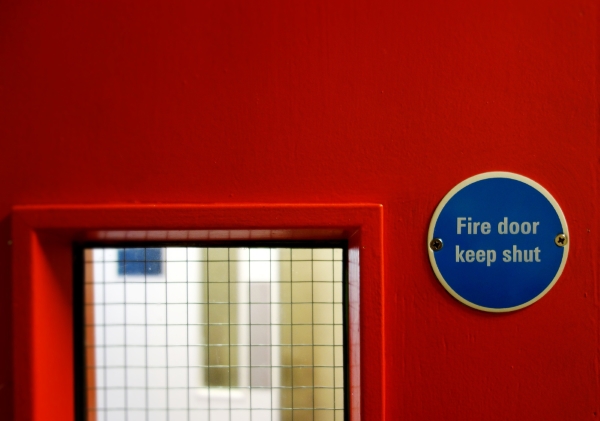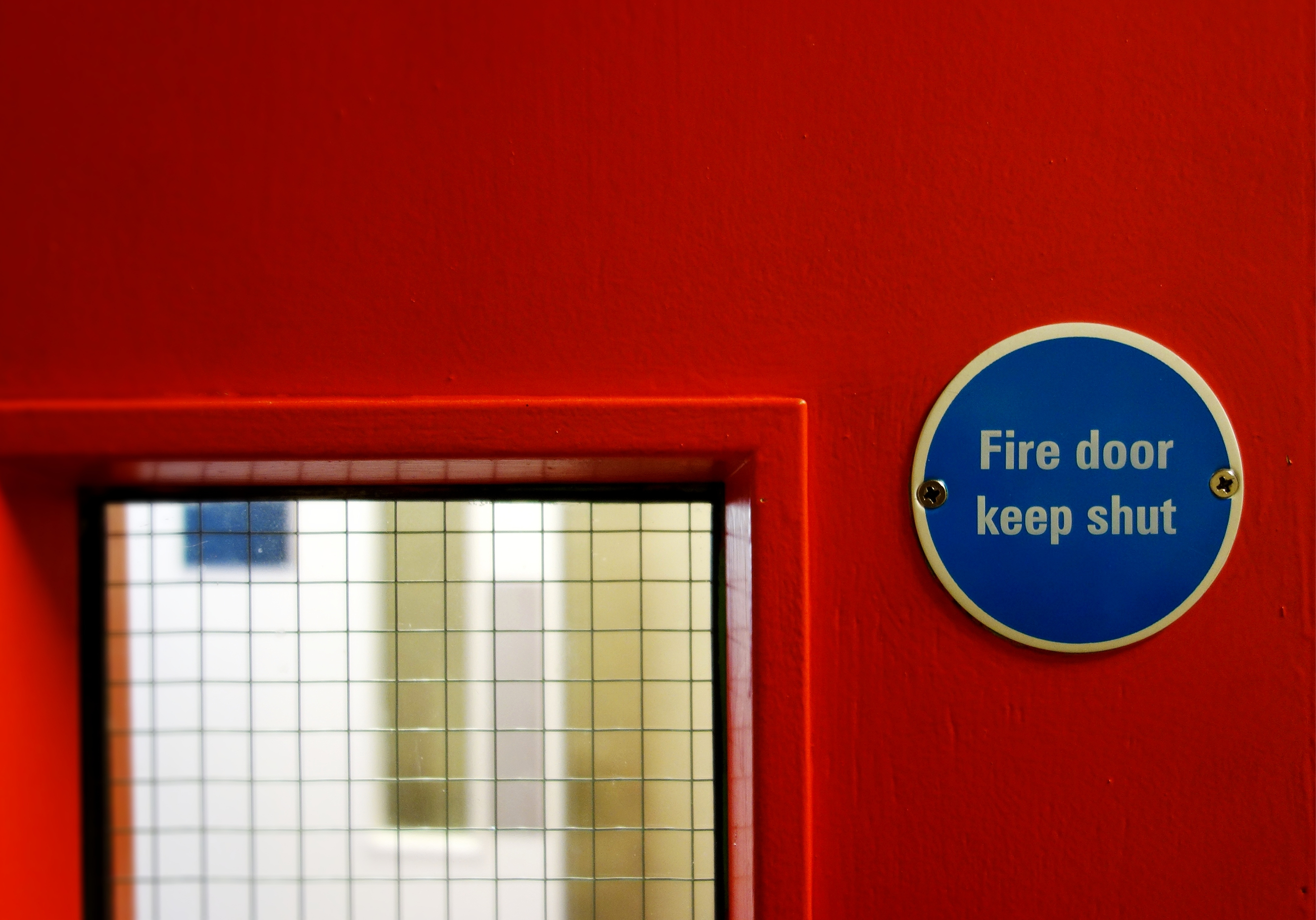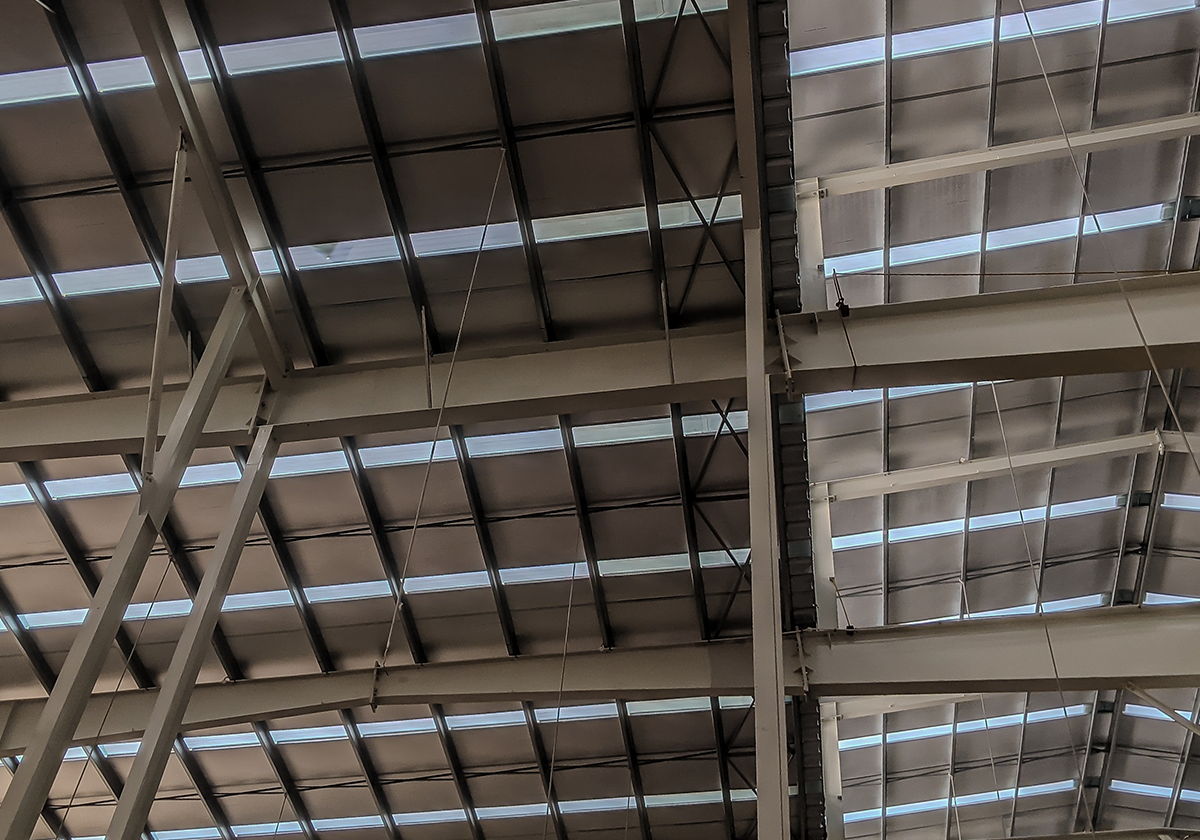Have you ever looked at a WSRB Commercial Property Report (CPR) and seen more than you’d expected? Rather than information on one building, you saw information on two buildings. Today, we’ll explain why this happens and provide some useful information about fire doors that you can pass along to your customers.
What’s a fire division?
In many cases, a fire division is simply a building, but sometimes, one building has multiple fire divisions. This happens when there are enough measures in place to prevent a fire from spreading from one part of the building to another. Each distinct part then becomes a fire division.
When that happens, we determine the loss cost for each division separately, and you see more information than you had expected in your report.
Fire doors are one of the key measures used to slow the spread of fire, and they play a part in determining fire divisions. Sometimes, fire doors also prompt questions from our Subscribers. Let’s explore what fire doors do and how they can affect commercial property risk.
What is a fire door?
Fire doors have been in use since the early 1900s and are an example of a passive fire protection system — that is, fire doors don’t actively detect or suppress fires like a fire alarm or fire sprinkler system would. A fire door is a door assembly — including the door, door frame, hardware and other accessories — with a fire resistance rating designed to slow the spread of fire and smoke between compartments in a building.
Fire doors come in varying sizes and many types, including swinging, sliding and rolling doors, and fire doors may be used to protect openings in walls, stairwells, elevators, chutes and other building features. In commercial buildings and hotel complexes, the doors in stairwells are most likely fire doors. Keeping stairwells safe allows occupants to exit the building, provides firefighters access and reduces the spread of fire and smoke.
Most fire doors should be kept closed at all times. Some fire doors are designed to be left open; they close automatically if a fire is detected. To reduce risk, it’s important for building occupants to use fire doors as designed and not block them open.
 For fire doors to work, building occupants need to use them as designed.
For fire doors to work, building occupants need to use them as designed.
Related:
If Fire Strikes Your Business, Make Every Second Count
What is a fire door resistance rating?
Fire door fire resistance ratings are determined by the time the door assembly withstood a fire exposure as established by standard testing procedures, and they range from as short as 20 minutes to as long as three hours. If the door can withstand the fire test for at least an hour, it is rated as a one-hour fire door; if it can withstand the fire test for at least two hours, it’s rated as a two-hour fire door, and so on. The door isn’t looked at alone when determining whether a door qualifies as a fire door and what fire resistance rating it has. The entire fire door assembly is tested.
The National Fire Protection Association (NFPA) publishes a standard for fire doors: NFPA 80 covers the installation and maintenance of fire door assemblies in walls, floors, and ceilings.
All fire protection systems, including fire doors, require regular inspection, testing, and maintenance so they’ll operate as designed in event of a fire. Fire doors should be inspected and tested at least annually, according to NFPA standards.
Related:
Fire Extinguisher Inspection and Maintenance: Follow these Key Steps
How do fire doors affect commercial property risk?
If two buildings are immediately adjacent or share a party wall, a three-hour fire door is required in any opening between them. If the fire door is inadequate, the two buildings are considered one fire division, and that could lead to a higher loss cost.
In the right situations, three-hour fire doors can be used to separate one building into two fire divisions, each with a separate loss cost that is typically lower than when the structure is treated as one fire division.
If you ever see something unexpected in a Commercial Property Report, contact us, and we can answer your questions. If you want more details on the fire doors in a structure you’re having us inspect, let us know by adding a comment when submitting the request. Remember, inspections are included as part of your subscription; there’s no fee for an inspection.
If you are seeking detailed information about fire doors in a specific building, please work with the agent to let the occupants know a WSRB property analyst will be visiting. Many building occupants today are busy and may have security concerns about inspectors they’re not expecting. When the occupants know ahead of time what we’re looking for and why we’re more likely to get you the information you need. Feel free to share our guide describing what an inspection involves to make the process go even more smoothly.








